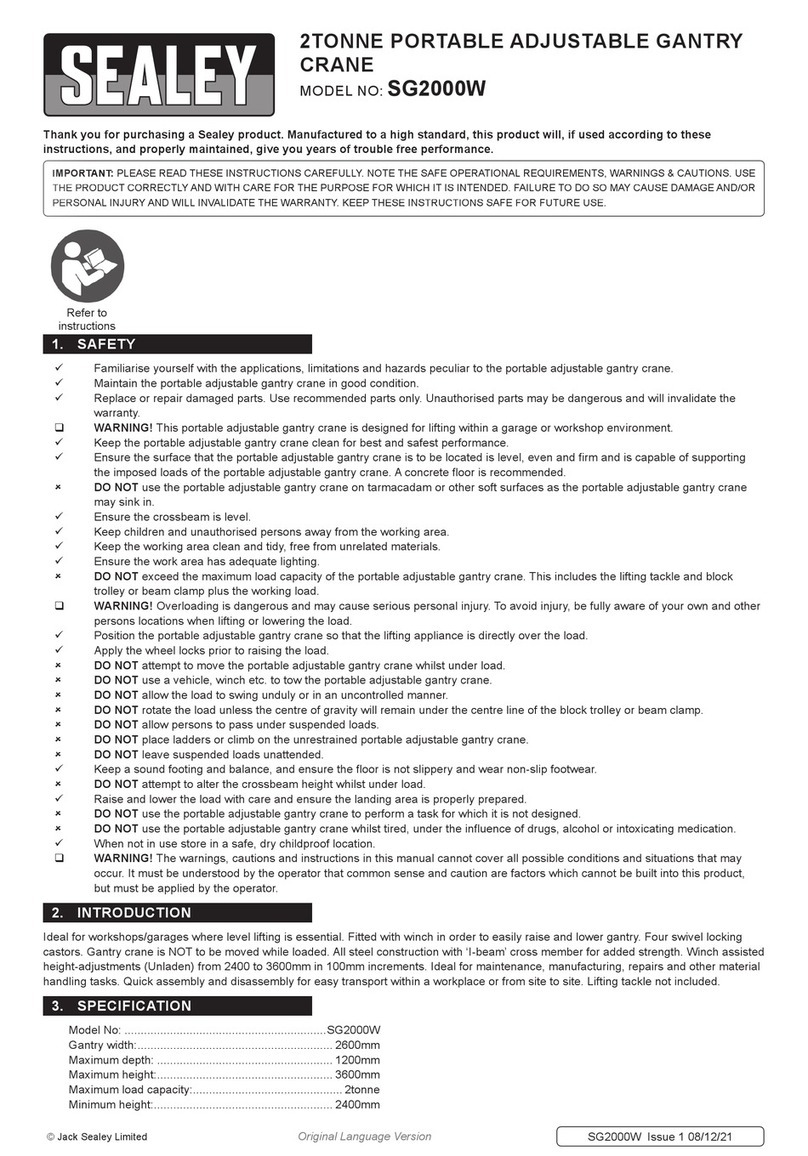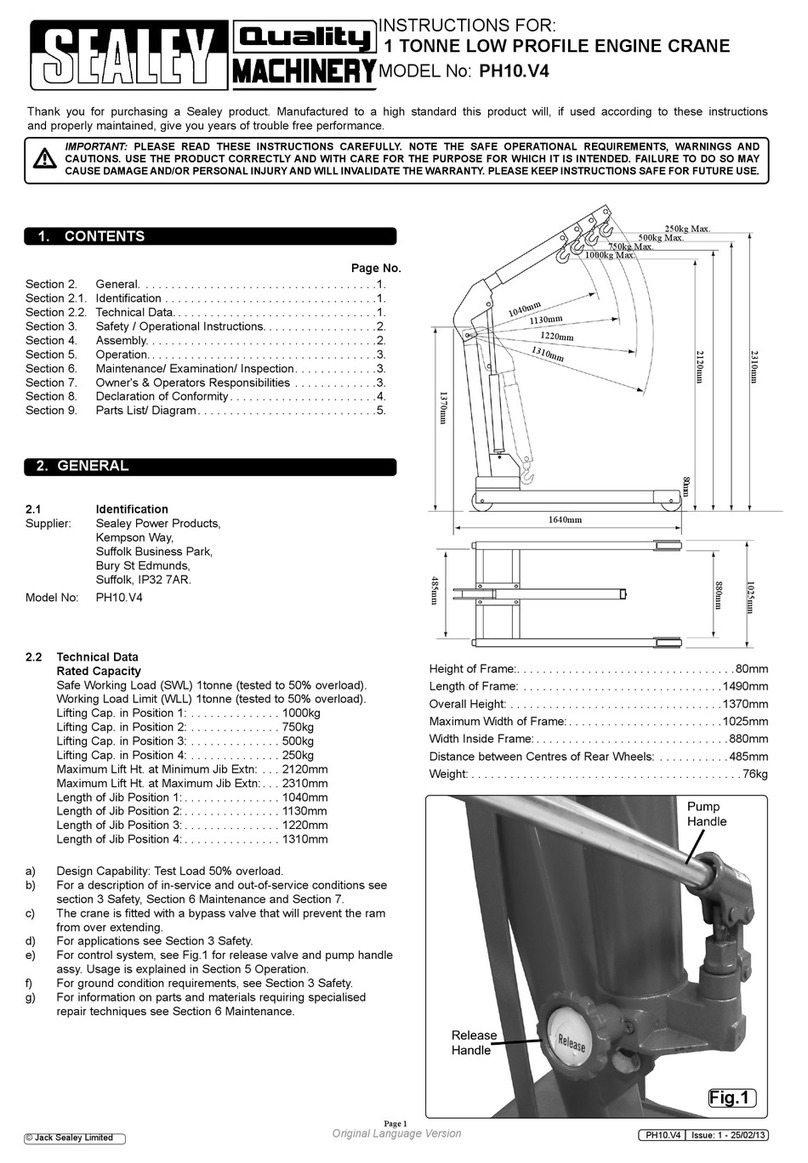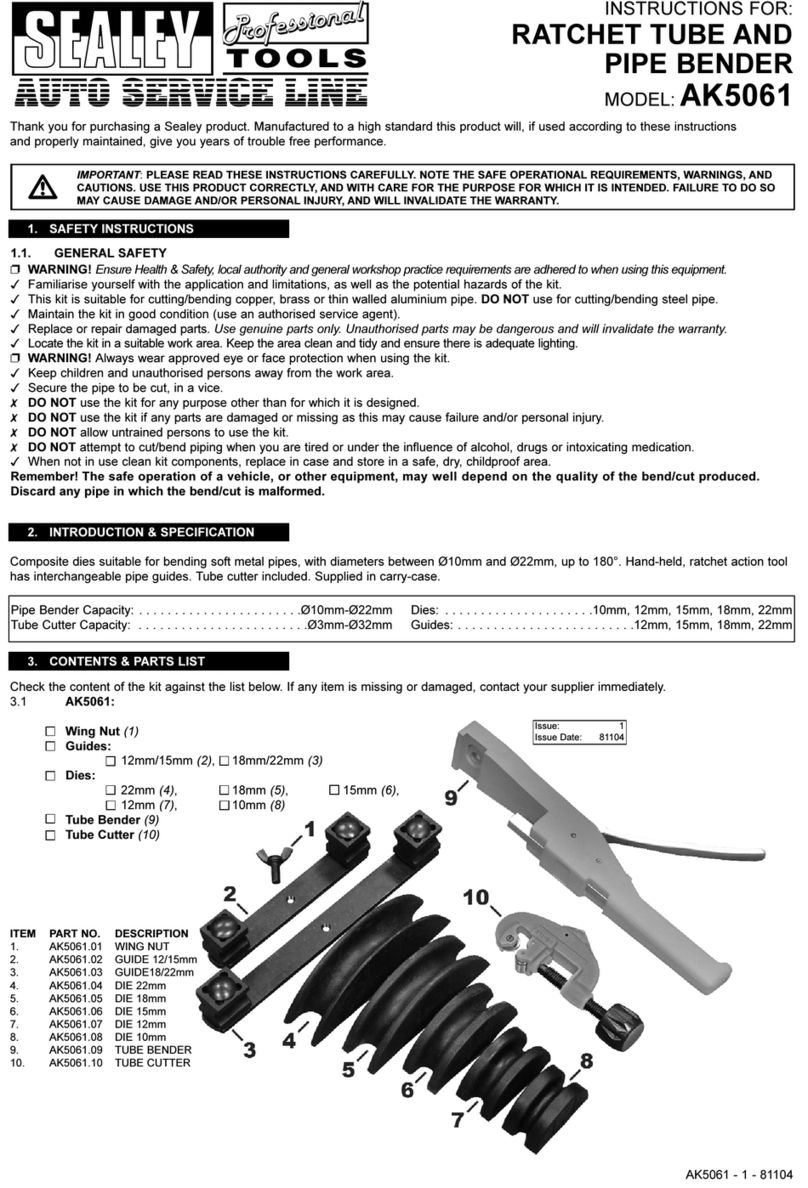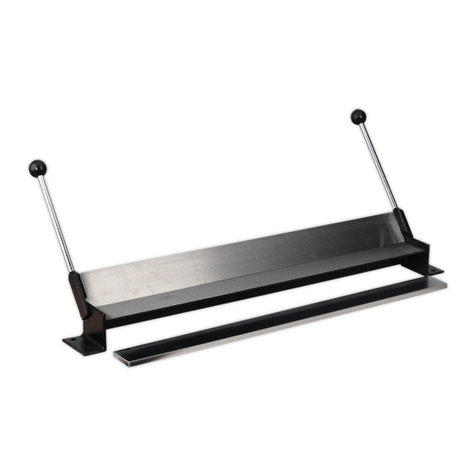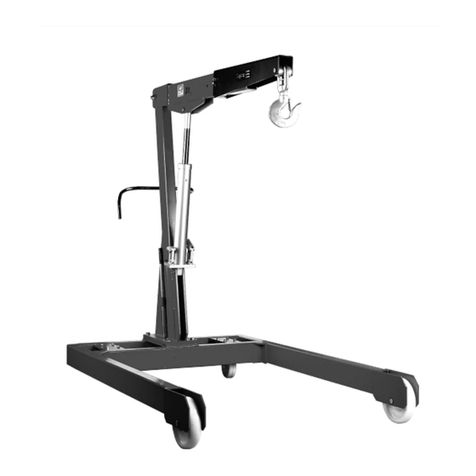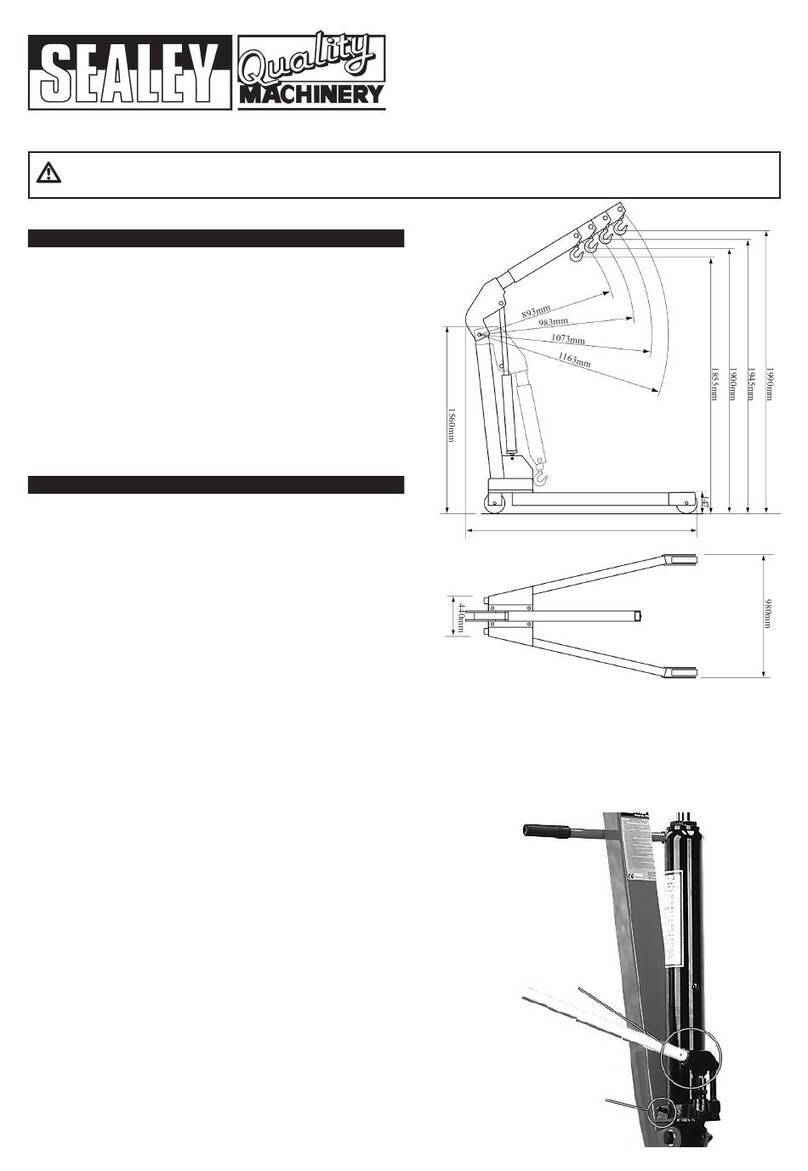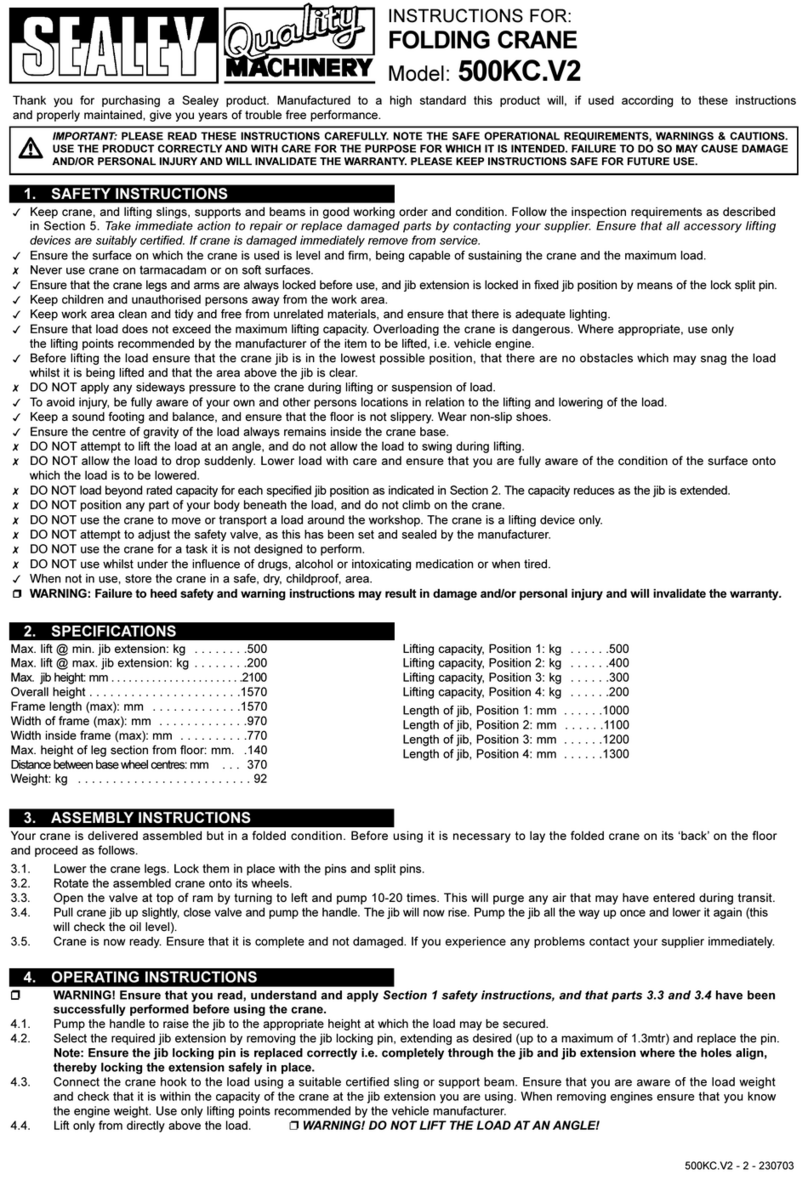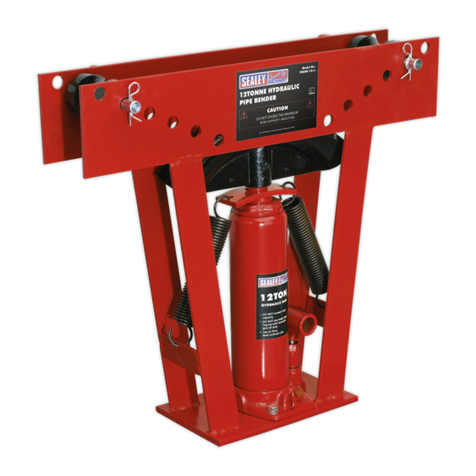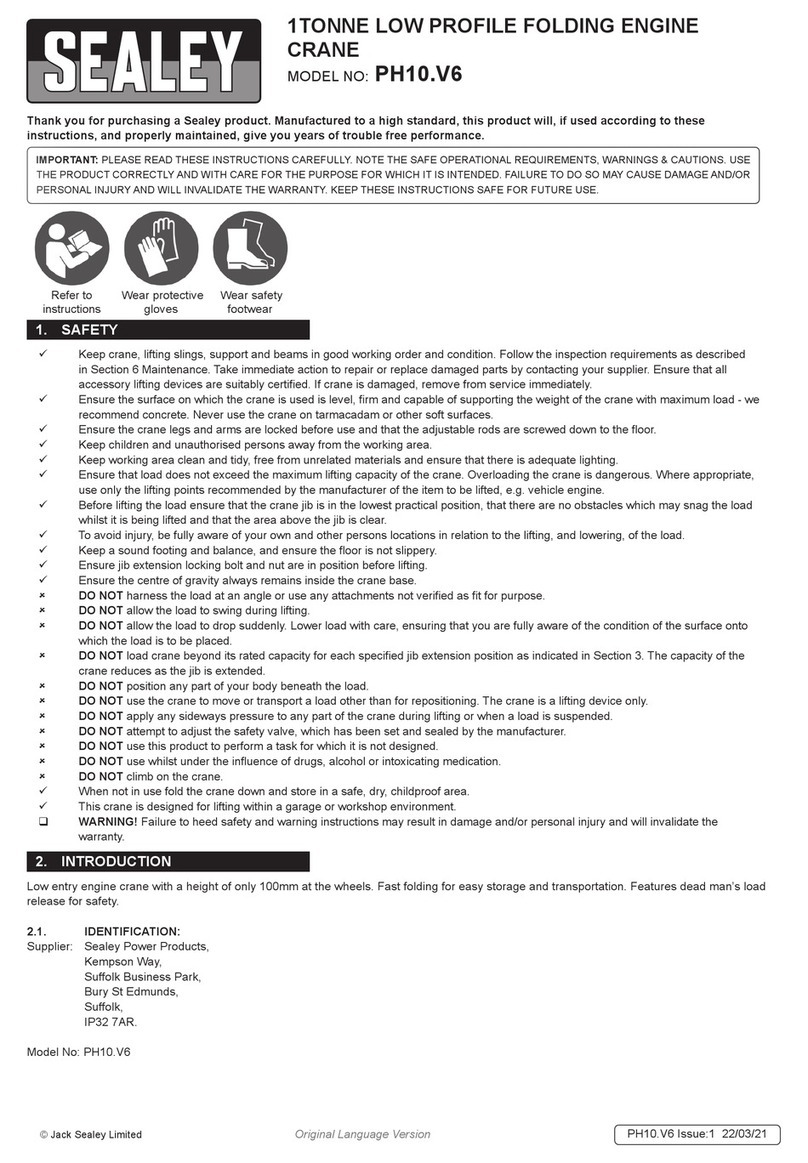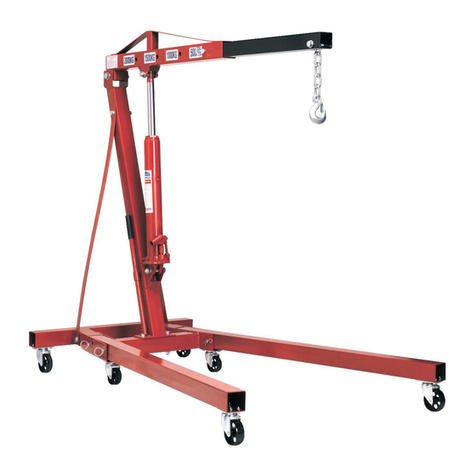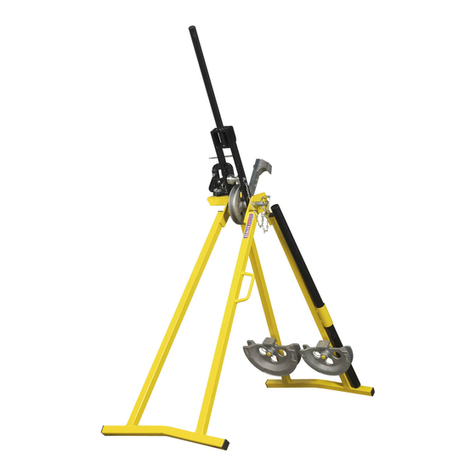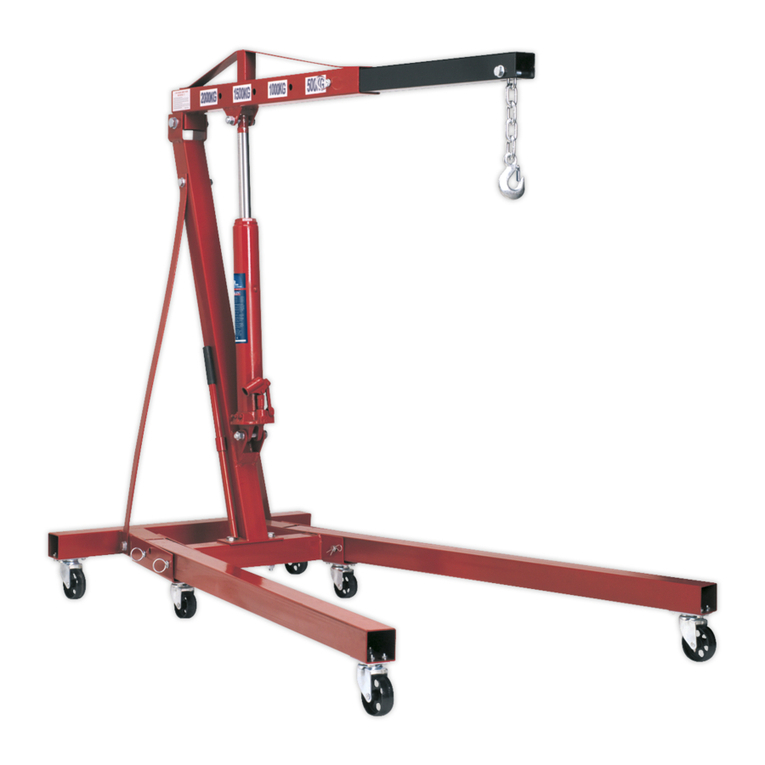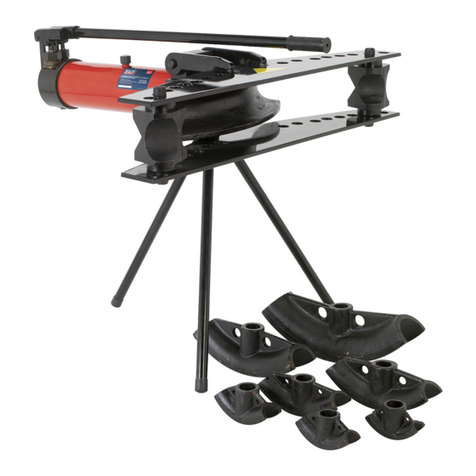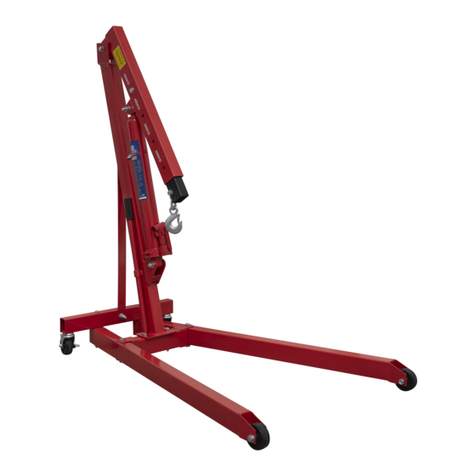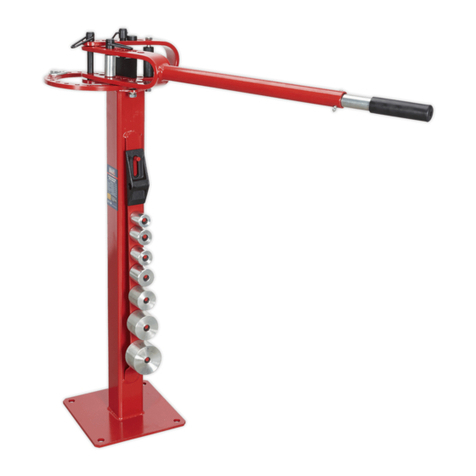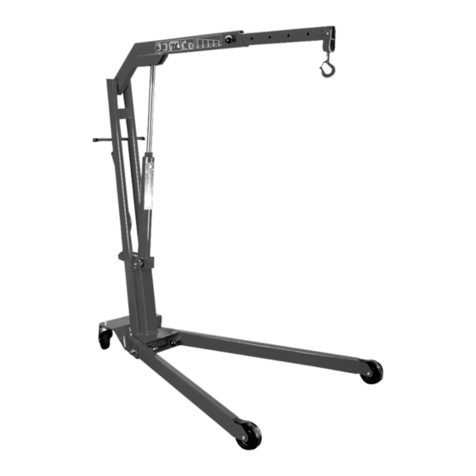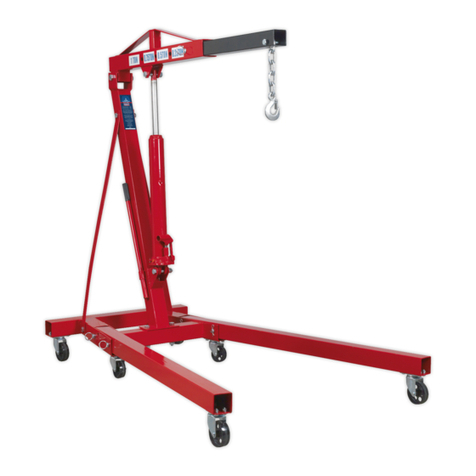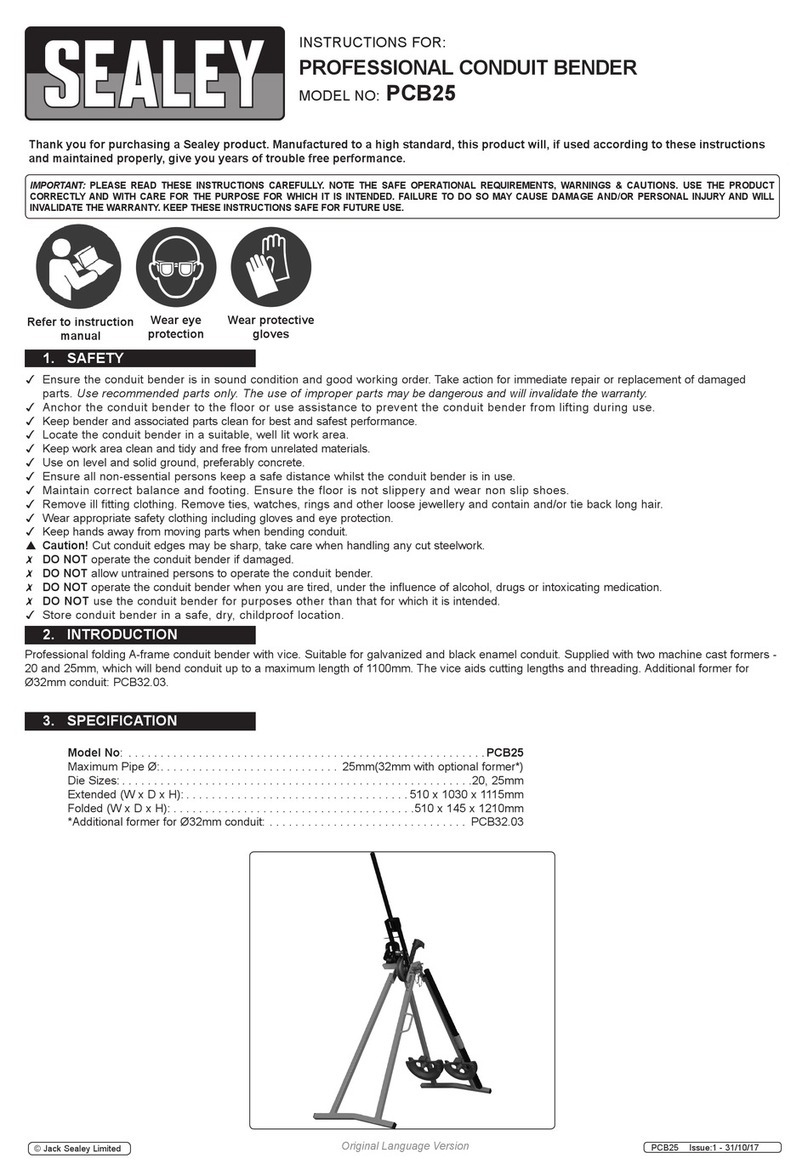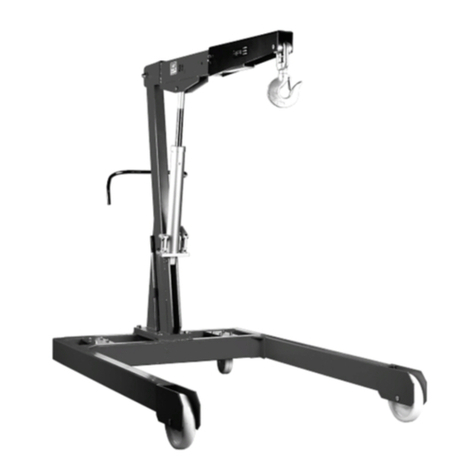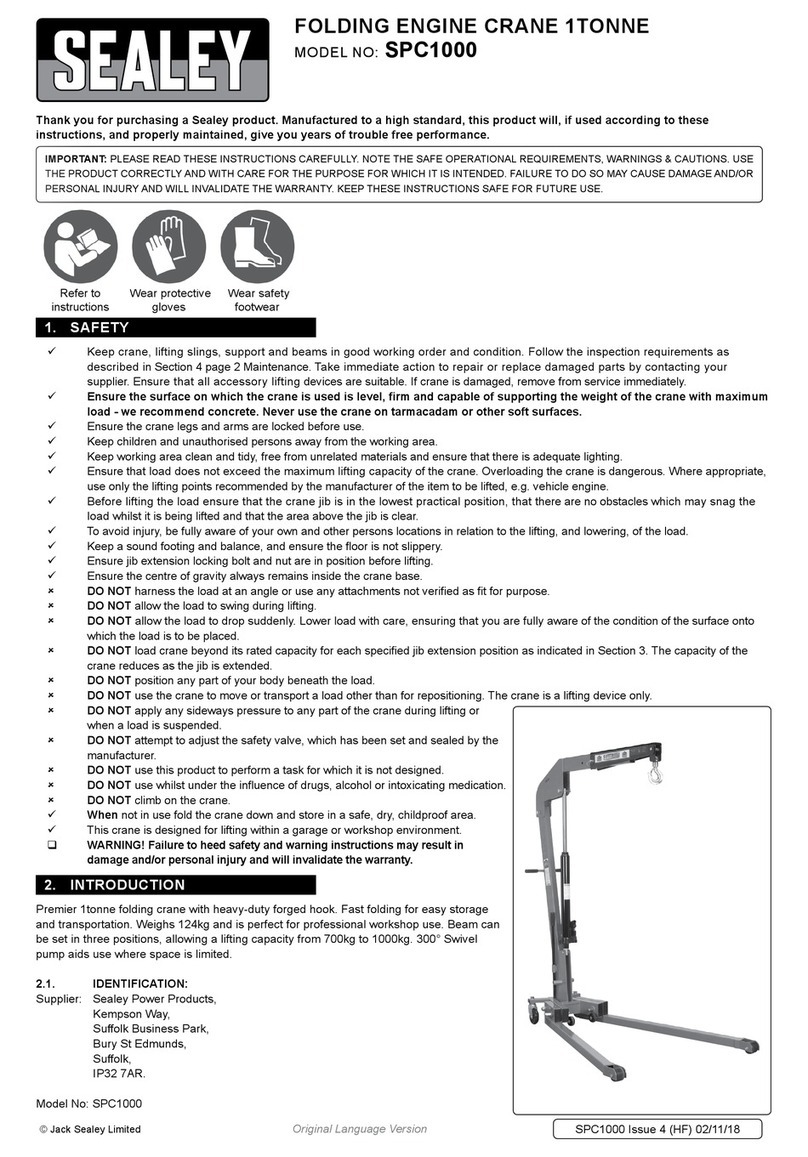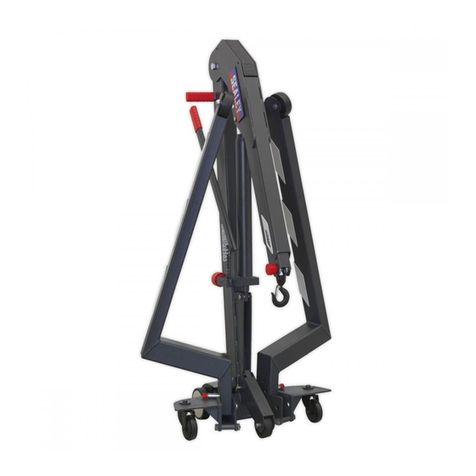
2.1. IDENTIFICATION:
Supplier: Sealey Power Products,
Kempson Way,
Suffolk Business Park,
Bury St Edmunds,
Suffolk,
IP32 7AR.
Model No: SC10LR.V2
3. SPECIFICATION
TECHNICAL DATA
Rated Capacity
Safe Working Load (SWL) 1t (tested to 50% overload).
Lifting Capacity in Position 1: ..................................... 1000kg
Lifting Capacity in Position 2: ....................................... 750kg
Lifting Capacity in Position 3: ....................................... 500kg
Lifting Capacity in Position 4: ....................................... 250kg
Model No:..................................................................SC10LR
3.1.1. Design Capability: Test Load 50% overload.
3.1.2. For a description of in-service and out-of-service conditions see
Section 1 Safety, Section 6 Maintenance.
3.1.3. Thecraneisttedwithabypassvalvethatwillpreventtheram
from over extending.
3.1.4. For applications see Section 1 Safety.
3.1.5. Forcontrolsystem,seeg.1forreleasevalve,pumpassembly
and handle. Operation is explained in Section 5.
3.1.6. For ground condition requirements, see Section 1 Safety.
3.1.7. For information on parts and materials requiring specialised
repair techniques see Section 6 Maintenance.
4. ASSEMBLY
4.1. ASSEMBLY.
We recommend two people assemble the crane as follows:
a) Lay out all the parts in the appropriate positions ready for assembly.
b) When assembling, fit a plain washer, then a locking washer before fitting nuts onto bolts.
c) Bolt legs to frame base.
d) Insert leg extensions, secure by winding in retention bolts.
e) Fit wheels. NOTE: Chock or secure crane to stop it moving around during the rest of the assembly process.
f) Fit main post brace, main support post and struts.
g) Fit hydraulic ram.
h) Fit hook and chain.
i) Check all nuts and bolts are tight.
j) Push the assembled crane into the working position ensure that all four wheels are in contact with the floor.
k) Before using crane place the pumping handle onto the release valve and turn to the left. With the handle inserted in the pump socket,
pump 10-15 times through the full stroke, thus bleeding any air which may have entered during transit.
4.2. STORAGE.
a) Always store the crane fully closed so that the jib is in lowest position and the ram is closed.
5. OPERATION
5.1. OPERATION. (Refer to Section 6.2 (a) regarding inspection before each and every use).
a) Use the pump handle recess to tighten the release valve, turning firmly clockwise.
b) Place handle into pump socket and pump, the jib will raise. Continue to pump until the jib reaches the height at which the load can be secured.
c) Connect the crane hook to the load using a suitable sling or support beam. Be aware of the load weight, and check that it is
within the capacity of the crane (at the jib extension you are using) and the sling or support beam. When removing engines ensure
you know the weight. Use only the lifting points recommended by the vehicle manufacturer.
d) Lift only from directly above the load. WARNING! DO NOT LIFT THE LOAD AT AN ANGLE!
e) To lower load, position handle on release valve at base of ram and turn VERY SLOWLY anti-clockwise avoiding any sudden movement.
WARNING! DO NOT allow the load to drop suddenly.
f) The crane is not a transportation device but may be used to reposition the load being worked on. To do so, lower load and jib
with care, to the lowest possible point before attempting to move. DO NOT try to move crane in a sideways direction. The crane is
not designed to support the load indefinitely. When you have repositioned the load, lower the load onto a secure and
appropriate working base, being fully aware of your own and other persons locations in relation to the lowering load.
g) When load has been secured, remove lifting sling, support beam etc. and place crane in a safe location with lifting beam fully lowered.
6. MAINTENANCE
NOTE: The crane MUST be kept clean and dry and must be maintained in accordance with these instructions.
6.1. LUBRICATION.
a) Oil all working parts monthly.
b) The ram is filled with oil and should only require occasional topping up. For the occasional top up DO NOT use brake fluid, as
PUMP HANDLE ASSY.
RELEASE VALVE
SC10LR.V2 Issue 3 (HF) 01/11/18
Original Language Version
© Jack Sealey Limited
g.1
